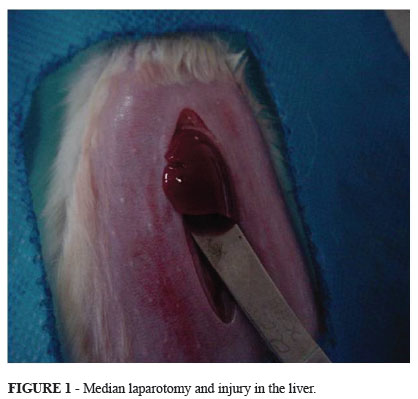PURPOSE: To evaluate the healing process of rat traumatic liver lesion corrected with the use of 2-octyl cyanoacrylate adhesive, compared to the use of biologically absorbable chromed catgut thread suture. METHODS: Thirty mail adult rats were divided into two groups (15 per group) according to the used method for liver lesion correction as follows: adhesive group (AG), and catgut group (CG); each group being divided into three subsets of five animals (7th, 14th, and 21st day), respectively, according to post-surgery evaluation. All animals were submitted to homogeneous lesion applying synthetic bonding to AG and using chromed catgut suture to CG for lesion correction. Macroscopic and microscopic parameters of healing processes were evaluated. RESULTS: Both groups of animals showed excellent abdominal wall healing, with no evidence of infection, and no abdominal cavity peritonitis or abscess. The presence of adherence was observed in both groups with no statistically significant difference. As to macroscopic evaluation, there was statistically significant difference with respect to specific factors of clinical inflammation (ischemic inflammation and giant celular inflammatory reaction) between animals evaluated on the 10th day (ischemic necrosis and giant celular inflammatory reaction) among animals evaluated on the 14th day (A14 versus C14). CONCLUSION: Applying 2-octyl-cyanoacrylate adhesive for correcting rat liver lesion does not change healing process when compared to the use of chromed catgut stitch.
Wound Healing; Liver; Adhesives; Rats






